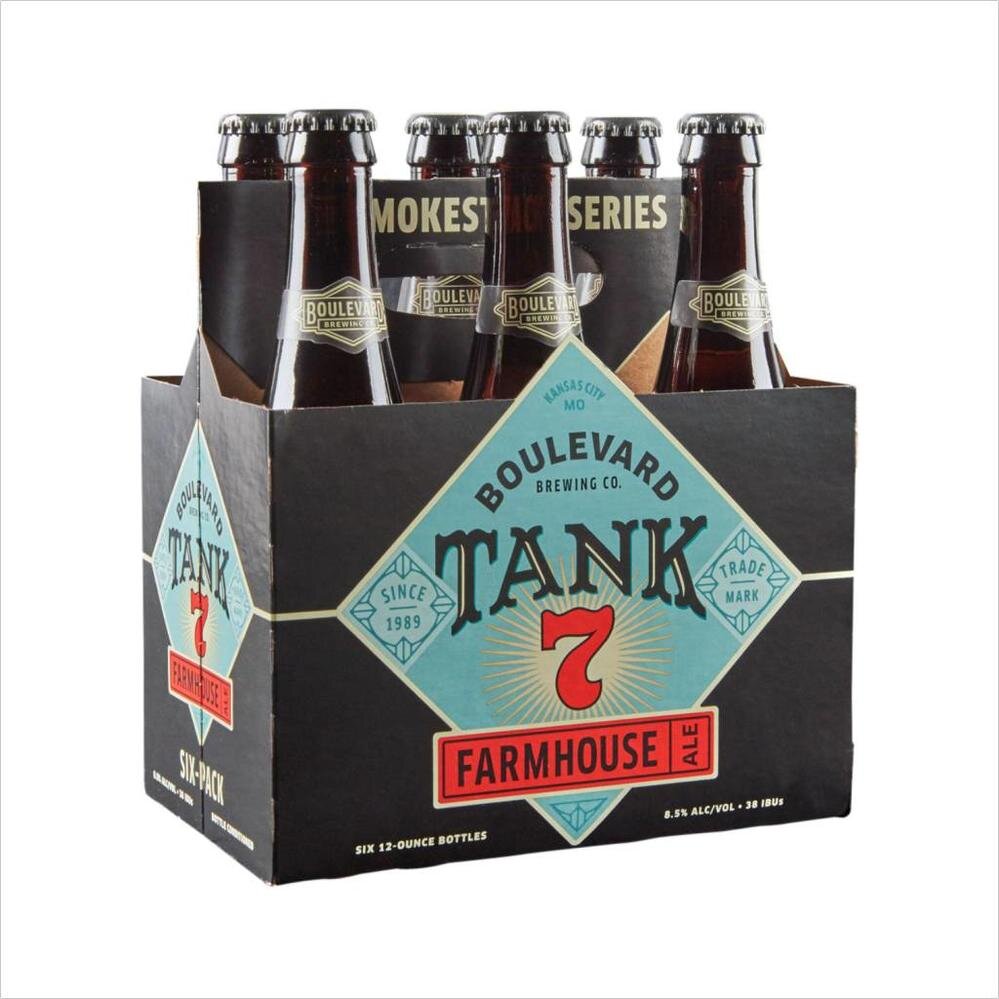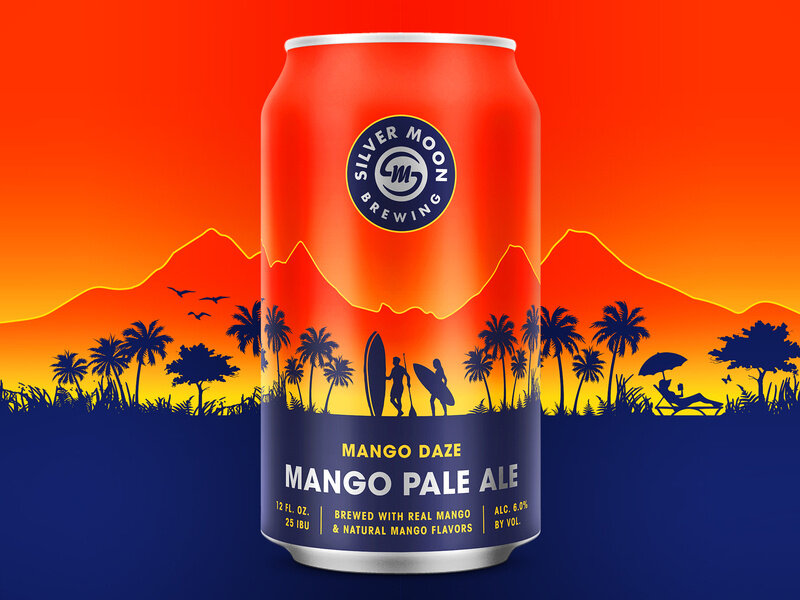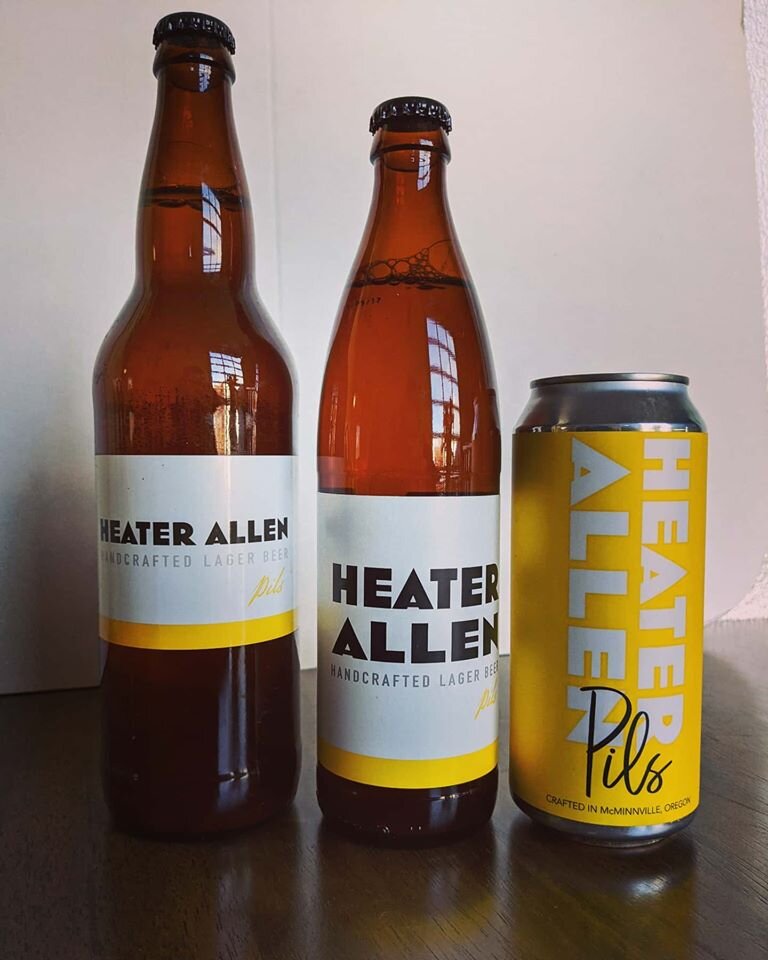The New School's Flagship February Picks

February, along with being Stout Month, Oregon Craft Beer Month, and Black History Month, is now also Flagship February. Invented last year by acclaimed beer writer Stephen Beaumont, Flagship February would like to remind you of the seeds from which hype beer germinated. Remember IPAs with IBUs, fruit wheat beers, and amber ales? Flagship February's gottem.
The New School staff looted the pyramids of beer history for some treasured memories and came out, still, with a smile. Here are our Flagship February picks, in ascending order of the breweries' birth years:

Shiner (1909) Bock
As someone who has spend a good chunk of his life in Texas, shiner Bock holds special place in my beer-loving heart. This dark lager is subtle in its roastiness and malt, and is crisp enough to send it down easy during a long day on the lake or at a music festival.
One of the beautiful things about Shiner is that it is appreciated by city slickers, rednecks, cowboys, hipsters, and everyone in between. This clearly translates beyond the Texas border, as Shiner Bock is damn near ubiquitous at this point in time. At a low price point and an ABV of 4.4%, it's eminently crushable. I have fond memories of sipping Shiner while chowing down on smoked brisket and sausage. Shiner also gets extra credit, considering its home at the Spoetzl Brewery has been family owned since 1909.
-Neil Ferguson

Pyramid (1984) Apricot Ale
As the stocker at The Bier Stein in 2010, Pyramid Apricot went on my restock list nearly every day. Somehow, an odd quirk, a personal aversion to anything so popular prevented me from tasting it until it literally arrived at my doorstep a couple weeks ago. Now, I understand. Here is a beer that tastes exactly like what it says it is; it's honest in that way.
The smell of apricots wafts like a late summer day in an orchard, heady and singular and ripe. And so, to drink in the nectar is almost a let down, as nothing comes close to that sort of smell, but the refreshment is there in droves. For a beer with 26 years behind it, a bronze medal in the Fruit Wheat Beer category at the 2020 Best of Craft Beer Awards, among other distinctions, keeps this old standard on the charts.
-Aaron Brussat

Anderson Valley (1987) Boont Amber Ale
Named for the town where the Boontling American-English dialect originated, Boont is simply the moniker for Anderson Valley's hometown of Boonville, California. Anderson Valley Brewmaster Fal Allen still remembers the first craft beer he ever tasted. It was Boont Amber Ale in 1987. He was still a couple decades or so away from taking the helm at the brewery.
Likewise, Boont Amber Ale has been a gateway beer for many, and among the first beers I personally enjoyed when tip-toeing into the waters of craft beer circa 2007. Boont is brewed with crystal malts to give it a deep copper hue and contribute a slight caramel sweetness. Boont goes through a hop back process using only whole-cone Columbus, Bravo, Northern Brewer & Mt. Hood hops for an herbal, spicy bitterness and a crisp, clean finish. It's available in cans, bottles and draft in over 35 states and more than a dozen countries.
-Michael Perozzo

Boulevard (1989) Tank 7
After nearly 21 years, Kansas City's Boulevard Brewing has become very good at brewing Belgian-style beers. Case in point is Boulevard's flagship Tank 7 American saison, inspired by the saison ales of southern Belgium, particularly Saison Dupont. Tank 7 offers a complex, yeasty layer of aromas, fruity, citrusy, and touches of hops, all of them a good set-up for the mouth-filling complexity of this American take on a Belgian classic, stronger than its European counterparts at 8.5% ABV, with a sophisticated interplay of malts, yeasty spice, and touches of hop bitterness leading to a pleasant finish that fades to dryness.
Enjoy this with a bowl of mussels - even better if they're also cooked in the same beer - or with a nice, melty, grilled cheese sandwich, or with a roast chicken dinner and a side salad dressed with oil and vinegar. Maybe you'll visit Antwerp, Belgium; Boulevard is owned by Belgium's Duvel-Moortgat brewery, a family-owned concern that also owns Firestone Walker and several Belgian brands. Brasserie de Pelgrim, a pub-restaurant right across the street from Antwerp's De Koninck brewery, offers an excellent line-up of draft beers and classic Belgian cuisine, and yes, those draft beers include Boulevard's Tank 7!
-Don Scheidt

Silver Moon (2000) Mango Daze
Mango Daze is Silver Moon’s flagship Pale Ale and is available year-round. According to Silver Moon's website, Mango Daze pairs well with “Paddleboarding with sharks, scaling the side of a volcano, reading a great book, harnessing the power of the sun”.
It’s an easy drinking pale ale at 6% ABV and 25 IBU. The aroma has a nice hop and malt balance that carries into the flavor profile, finishing bright and tropical. The mouthfeel is nice and light, with a great amount of carbonation both from the can, and on tap. A light and pleasant bitterness in the aftertaste rounds out the Mango Daze. With every drink of this beer, it leaves you wanting another.
-Heidi Howard

Laurelwood (2001) Free Range Red
Laurelwood has always seemed to be a brewery that tries to offer all things to all people, and this beer is a perfect example of that effort. Remember way back when IPAs had not yet reached supremacy, and red ales (aka amber ales) commanded a big chunk of the craft beer market? Back in 2002 or so, this beer was one of the hottest new brews on the Portland scene. Ahead of its time, it was also one of the first organic ales around these parts.
Free Range pours a reddish amber color with a creamy white head. Malt-forward aroma with a hint of hoppy bitterness. A nicely balanced palate of two-row malt and C-series hops that’s not too sweet, not too bitter. More bitterness on the finish, but not in a bad way. The flavor profile definitely shows its age, but Free Range (no longer organic) is a tasty throwback to an earlier era of the craft brew movement.
-Gordon Feighner

Ninkasi (2006) Total Domination
Aptly abbreviated to Total Dom, this mid-oughts Northwest staple satisfied the IBU fetish of the era. It was everywhere in Eugene, though I was exhorted to try Believer first when I flip flopped into the Campbell Club, road weary from a cross country trip, in the summer of 2008. There was a keg of Total Dom at the Eugene Whiteaker International Hostel every Last Friday Art Walk, pumped 'til empty to the beats of a Grateful Dead cover band. That beer, holding true to the character of its name, catapulted Ninkasi to the top of the "must visit" brewery list.
Today, Total Dom reads like an English IPA on steroids; my how the winds of our perception have shifted! With resinous hops, caramelly malt, and a burly, bitter finish, the beer actually begs for food: strong English cheese, pork belly, and rich, creamy French desserts are welcome.
-Aaron Brussat

Heater Allen (2007) Pils
Oregon has become one of the best states in the country for craft lagers, and a lot of that is owed to the ground breaking work of Heater Allen Brewing. I worked at Belmont Station in the biercafé when Heater Allen Brewing first debuted as a nano operation selling old school German lagers primarily to tourists out visiting wineries in McMinnville who might be interested in a change of pace.
Rick Allen used to pop into the bottle shop with samples, hand delivering draft, and then bottles without UPC codes. They were so good that the shop made space and a custom code to ring them up. I wish I could say that I knew how important and game changing the beers were back then, or that I appreciated the Pils like I do now. It was actually the Schwarzbier that first really caught my attention. In hindsight, it's the Pilsner that was really prescient. A fairly traditional example but with more hops than people were used to at the time, it's still one of the best examples out there and perhaps the best beer to give your lager-phobic beer nerd friend who only drinks IPA.
Heater Allen Pils has been updated over the years, and head brewer Lisa Allen tells me the description on the website is not up-to-date, so here is an update: Brewed with a Czech-style malt bill comprising a combination of floor malted and un-floor malted Bohemian Pilsner malt for a full bodied character, the Czech influence continues through the rest of the beer. A step-mash is instituted to control fermentation and malt flavors, the yeast is the "Global" strain from Portland's Imperial Yeast for a clean and long 2 week primary fermentation, followed by 5-6 weeks lagering.
The hopping is a modern update on classic Czech lagers, the Pils is first-wort-hopped with an equal ratio of Czech Saaz and German Magnum, and then more additions of Saaz near the end of the boil and in the whirlpool. The total process from brewing to bottling takes about 8 weeks.
Heater Allen Pilsner is now available in 16oz cans, which is friggin amazing and more places need to carry these. This is not a throwback pick, Heater Allen Pils is one of the best out there currently.
-Ezra Johnson-Greenough